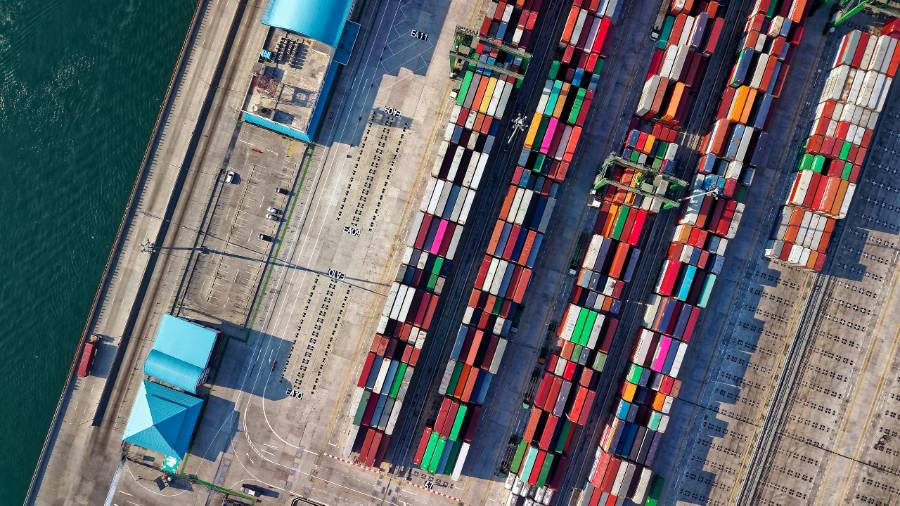What Does ‘Gemba’ Mean?
‘Gemba’ is a Japanese word meaning ‘the real place’. Gemba is the place of action, which is often, but not always, the workplace. It refers to where the value is being created, and it means more in Lean operations than just its translation. For more information about Gemba and the Gemba way, watch the video blog version here.
What is Gemba Philosophy?
Gemba is more than a Japanese translation, it is a management philosophy born from the Lean Toyota Way with a bias for direct action, hands-dirty management and getting facts from the source. It means to give great weight to actually “going” to the place of action, observing and collecting facts on the ground and to examine the actual processes as they are happening. The actual processes are observed and the actual data is collected. Gemba is a management philosophy, as much as it is a location.
The opposite to following the Gemba philosophy to management, would be to try to manage remotely. A great, and growing danger in our current remote working times, especially for white collar middle managers. This would see the process engineers, supervisors and operations managers primarily meeting and brainstorming away from the shop floor, warehouse or factory back in their cubicles or home offices. Remote meetings, stirring spreadsheets and simulations are great but not without a foundation of observation and fact gathering from the Gemba. Too often managers and supervisors have that balance badly wrong at their cost. “Gemba” is a Lean management philosophy that demands we spend our time visiting the real location of the action, observing, understanding and collecting the facts from the ground.
What Are Gemba Boards?
Gemba boards are part of visual management and involve a visual display of the performance data at the Gemba, ‘the real place’. Teams will use them as a focus to discuss performance data down in the location of the Gemba (the place of the action), not in the central office HQ building across the road or on zoom.
Data can be updated quickly onto the Gemba boards, key issues discussed and immediately observed in real life as the team gathers – at the Gemba.
DISCOVER THE “FORGOTTEN FUNDAMENTALS” OF OPERATIONS MANAGEMENT”
What is a Gemba Walk?
Gemba walks are all about walking around the Gemba in a structured, organised and routine way. This enables managers, supervisors and engineers to connect with the reality of the operations of the business in the shop floor, workshop, service desk, laboratories or even the office, if that is where the value is created.
How to Add Structure to Your Gemba Walks
A few managers wandering about is not a Gemba walk. To get maximum benefit, insight and action, Gemba walks involve planned, regular structure. Here are a few tips to improve your Gemba walks:
- Pick a Theme
Firstly, examine what it is you will be looking for on the Gemba walk. For example, this could be to look for technical problems, carry out audits, look at key performance of critical processes, or assess health and safety risks. This theme could be on a planned schedule. E.g., with a focus on safety on Mondays and a focus on quality problems on Tuesdays…
- Prepare Your Team
The next step is to decide who attends the Gemba walks and how often they will do so. It is useful to consider whether there will be a rota in place, or whether the same people will attend every walk. If key people are missing, more questions can be raised than answered but also, we need to be acutely aware of the cost and opportunity cost of having a group of our managers and supervisors walking about, especially those who do not need to be there on every meeting.
- Focus on the Processes, Not the People
Inform employees about the content and purpose of the Gemba walks. It will be useful to have employees explain the process for better understanding. The narrative is important. Workers like to see their managers are aware of what is really happening but bad communication and a careless approach to questioning people can cause resentment. Seek to understand the processes.
- Be Where the Value Stream Is
Assess whether you are in the most important, value-generating part of the business, the Gemba. We need to be there.
- Record Your Observations
As you are walking around the Gemba, write down notes and record any critical parameters that will be taken routinely. Recording observations in this way allows you to remember how many times it is that you’ve seen something, and therefore whether any patterns are emerging. Some important observations will want to be recorded in a standardised way and logged in standard place. For example, perhaps the quantity of boxes waiting for dispatch is particularly important and should be counted daily to track outgoing WIP; you could use a standardised Gemba form and whoever fills it out that day, could log it onto the Gemba board for all to see.
- Have an Extra Pair of Eyes with You
There is often more value in a Gemba walk when it is done with another person. This might be the area supervisor, the supervisor of another area, a smart operator with the potential to be promoted, or the operations director. Pairing a more senior operations manager with even a junior line operator will be insightful for both.
- Follow Up
The final stage of the Gemba walk should be following up. This means taking action on the observations. If the collected data isn’t used to make considered, prioritised decisions to make important changes, then the Gemba walk is a waste of time.
What is Visual Management?
“Visual Management” means to be able to control and understand processes by sight. It is another management philosophy that advocates presenting data visually and publicly to make fast, actionable decisions. Schedules, standard work procedures, performance data and quality and maintenance plans can all be made visible, easily accessible and up-to-date. Watch the video on visual management for more information.
Visual management is important to the Lean Manufacturing Philosophy (‘Lean’ operations) and is closely related to 5S, another Lean improvement tool: (Sort, Set in order, Shine, Standardize, and Sustain). In essence, visual management is the ability to ‘control by sight’. If an operation is visited and these aspects of visual management are not present, then the operation is probably far off being ‘Lean’.
The Visual Management of Data and Business Systems Improvement
Operating under the philosophy of visual management would mean that performance data, KPIs, should be visually displayed on the production lines, Gemba or wherever the operations are happening, using dedicated display boards, print-outs, whiteboards, or display screens mounted on the wall.
Gemba boards are a good example of visual management, with daily performance data on a screen or printed out on simple charts next to the Gemba which are then updated regularly to control the process and share information with everyone during a shift. This ensures that the data is visually available to those who need it, and to inform decisions and track metrics in real time. But visual management is much more than data displays, it means to make things easier for the operators, supervisors and managers though visual clarity.
Examples of Effective Visual Management
- Transparent plastic guards to allow operators to see the internal working of a machine
- Status lights (Andon lights) to make stoppages immediately visible to all
- Project progress posters on display in a common room
- Red tags can be placed on reported maintenance issues
- Shadow board can be used to organise tools so that it is obvious if something is missing
Summary
Business operations are complex and managing them well means to understand what is really happening. Getting to the Gemba and designing operations to be more easily “visually managed” is a huge benefit and so often neglected.
Making it easy for operators to run and manage their process visually, for supervisors to spot and correct problems and for managers to get to the Gemba and visually see the overall performance and priorities are easy and effective ways to improve your business operations at every level.
I’m Laurence Gartside, Rowtons Training is my company through which I offers online video training courses in business systems improvement including some specific courses on Lean Operations, Inventory Management and Business Systems and Processes.
Crack On!





